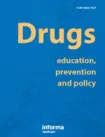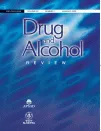 Accueil
Accueil
Détail de l'auteur
Auteur J. BRYANT |
Documents disponibles écrits par cet auteur (13)
 Ajouter le résultat dans votre panier Faire une suggestion Affiner la recherche
Ajouter le résultat dans votre panier Faire une suggestion Affiner la recherche
Livre
Cet ouvrage vise principalement à présenter les principes scientifiques et horticoles, avec leurs applications pratiques, nécessaires pour la sélection et la multiplication du cannabis en général et de ses variétés psychotropes.
Article : Périodique

Livre
L'auteur raconte dans cet ouvrage comment s'est développé l'usage de la cocaïne, depuis son utilisation originelle comme anesthésique local ou antidépresseur, et son incorporation à des vins toniques ou même à du chewing-gum, jusqu'à son statut [...]
Article : Périodique
D. M. PAQUETTE ; J. BRYANT ; J. DE WIT |Aims: Respondent-driven sampling (RDS) is increasingly being used to sample hidden populations, such as people who inject drugs (PWIDs). This study compared samples of PWID recruited from RDS and service-based sampling methods to explore whether[...]
Rapport
C. TRELOAR ; P. HULL ; H. WILSON ; J. BRYANT | Sydney : National Centre in HIV Social Research (NCHSR) | 2009Key findings: Illicit drug use was common among attendees of the Big Day Out who resided in Queensland, with 61.5% reporting that they had used at least one illicit drug in the previous 12 months. The most commonly used drugs were cannabis (by 4[...]
Article : Périodique
The exponential rate of development in science and technology in recent decades has had a profound social impact. In particular, computing and the Internet have indelibly altered the world's social, economic, and intellectual landscapes. The Inf[...]
Périodique
M. HOPWOOD ; C. TRELOAR ; J. BRYANT | 2006ENGLISH : Hepatitis C-related discrimination is reportedly common, however few studies have investigated this phenomenon. This paper presents findings from a cross-sectional study of people with self reported hepatitis C virus (HCV) infection [...]
Article : Périodique
J. BRYANT ; B. BONEVSKI ; C. PAUL ; P. HULL ; J. O'BRIEN |Introduction and Aims. Novel ways of accessing and engaging smokers who are socially and economically disadvantaged may help reduce socioeconomic disparities in smoking rates. This study assessed the feasibility and acceptability of integrating [...]
Périodique
J. BRYANT ; C. TRELOAR | 2008ENGLISH : Research about initiation to injecting drugs emphasises the role that relationships with others plays in the experience, suggesting investigations of initiation should include an examination of both initiates and initiators. This pap[...]
Article : Périodique
Respondent-driven sampling (RDS) is a relatively new form of sampling hidden populations. RDS has the ability to produce valid population estimates, provided that certain assumptions are met. This study examined whether an RDS survey of people w[...]
Article : Périodique
C. L. PAUL ; B. BONEVSKI ; H. E. TURON ; J. BRYANT |Introduction and Aims. Despite the persistent socioeconomic gradient associated with smoking, little is known about how to 'close the gap'. There is a debate regarding the implications of directing resources away from general population efforts [...]
Article : Périodique
ENGLISH : This paper explores differences between women's and men's first experience of injecting in relation to socio-demographic context, drug use, and the role of others. We collected cross-sectional retrospective data from 334 recently ini[...]
Article : Périodique
D. M. PAQUETTE ; J. BRYANT ; J. DE WIT |Background Respondent-driven sampling (RDS) is a method for recruiting hidden populations, such as people who inject drugs (PWID). In RDS, participants recruit their peers into the study; who recruited who into the study is tracked, and thus inf[...]




